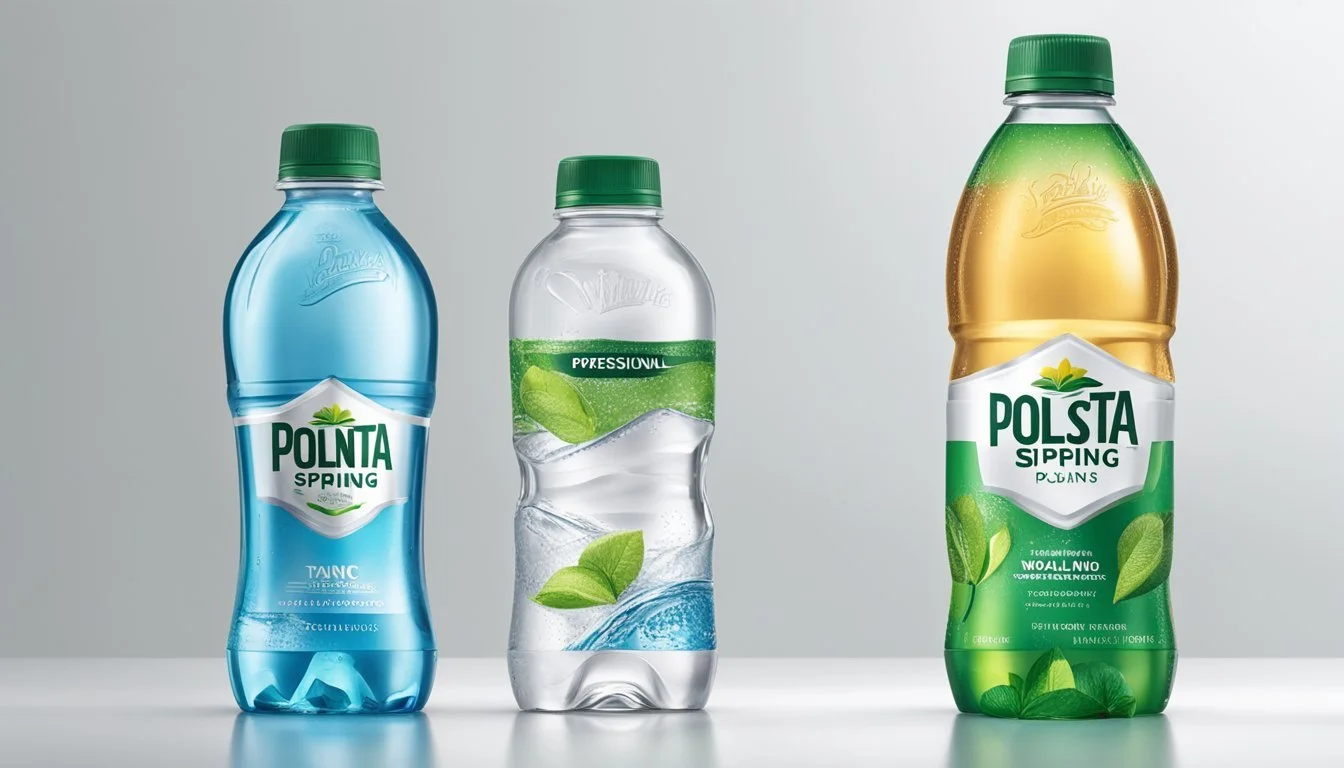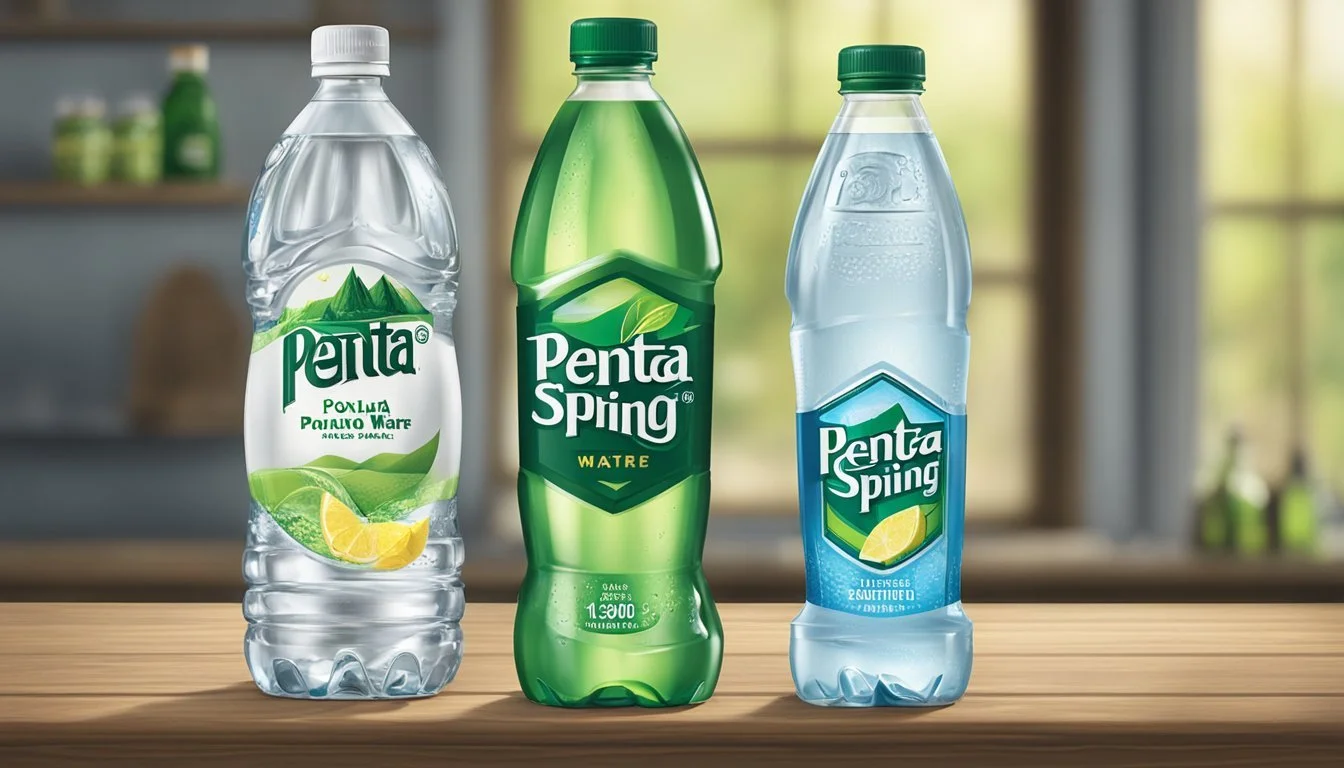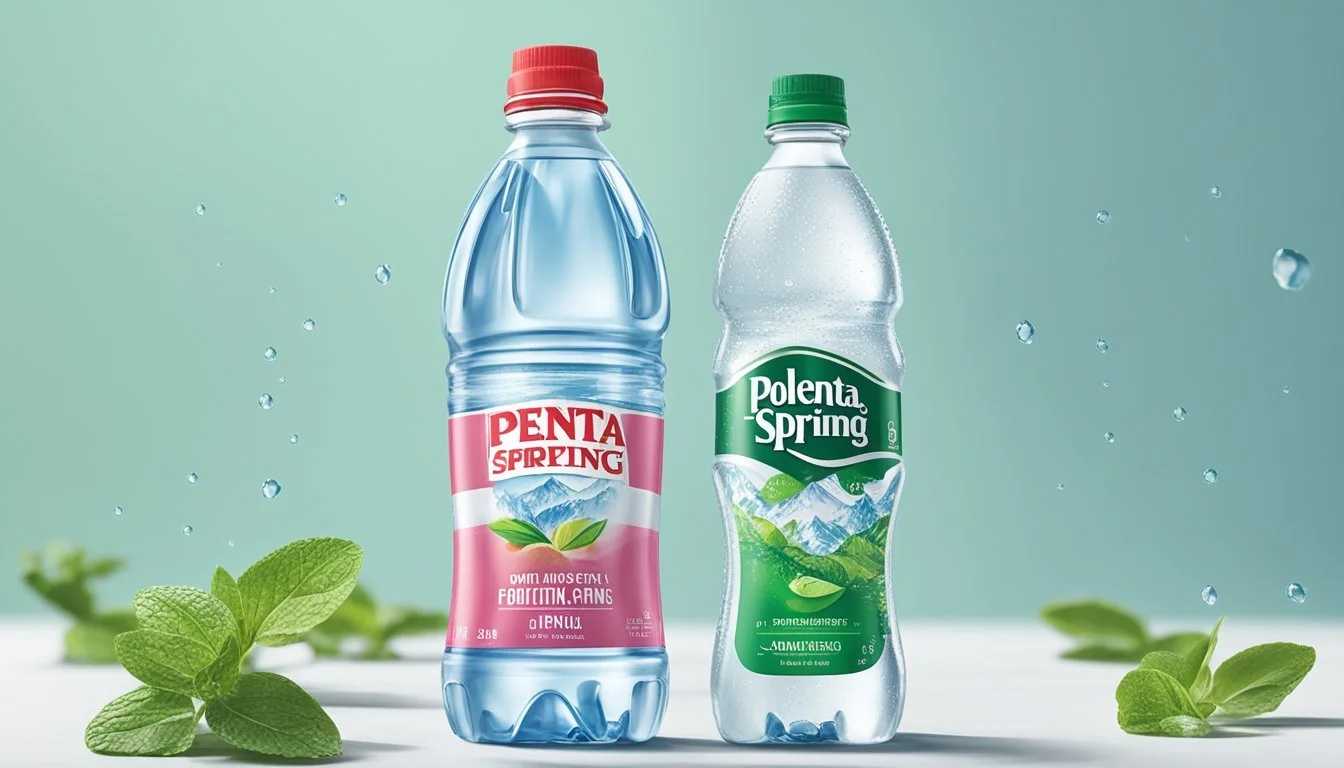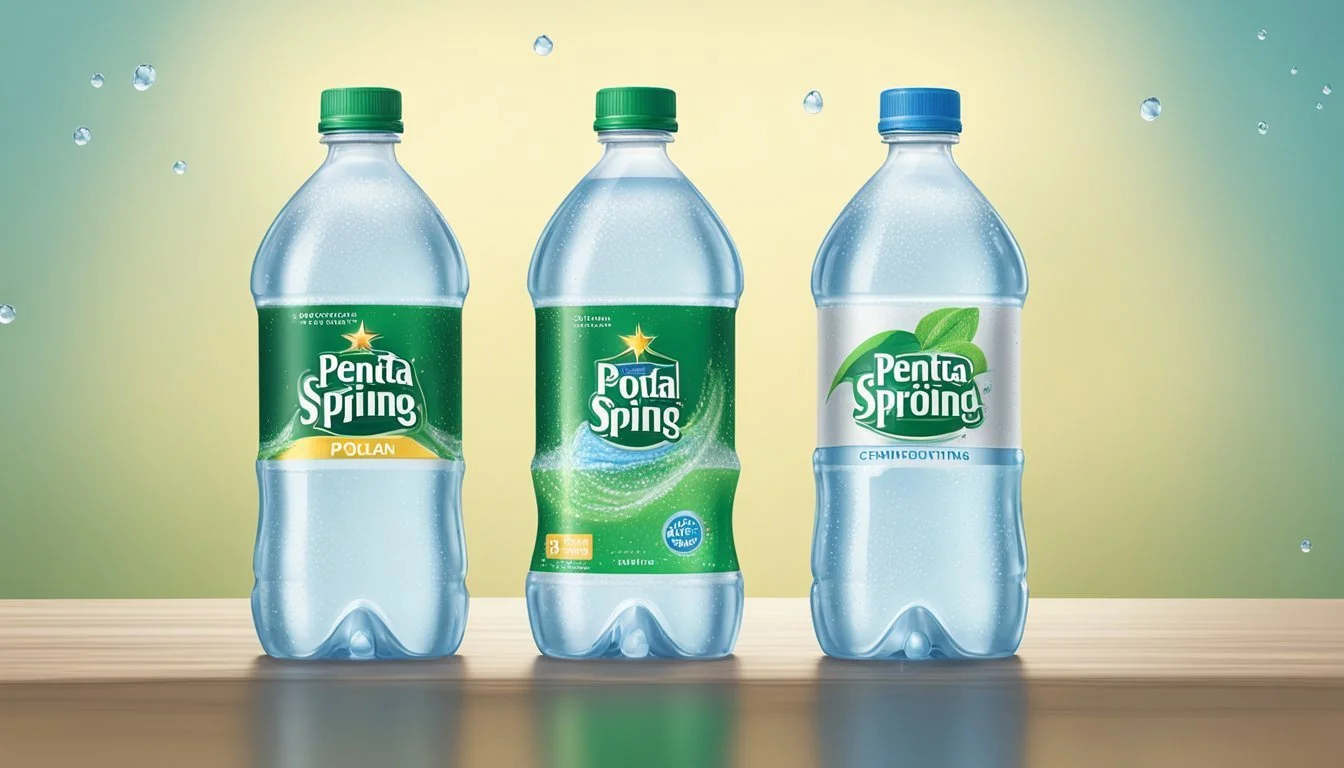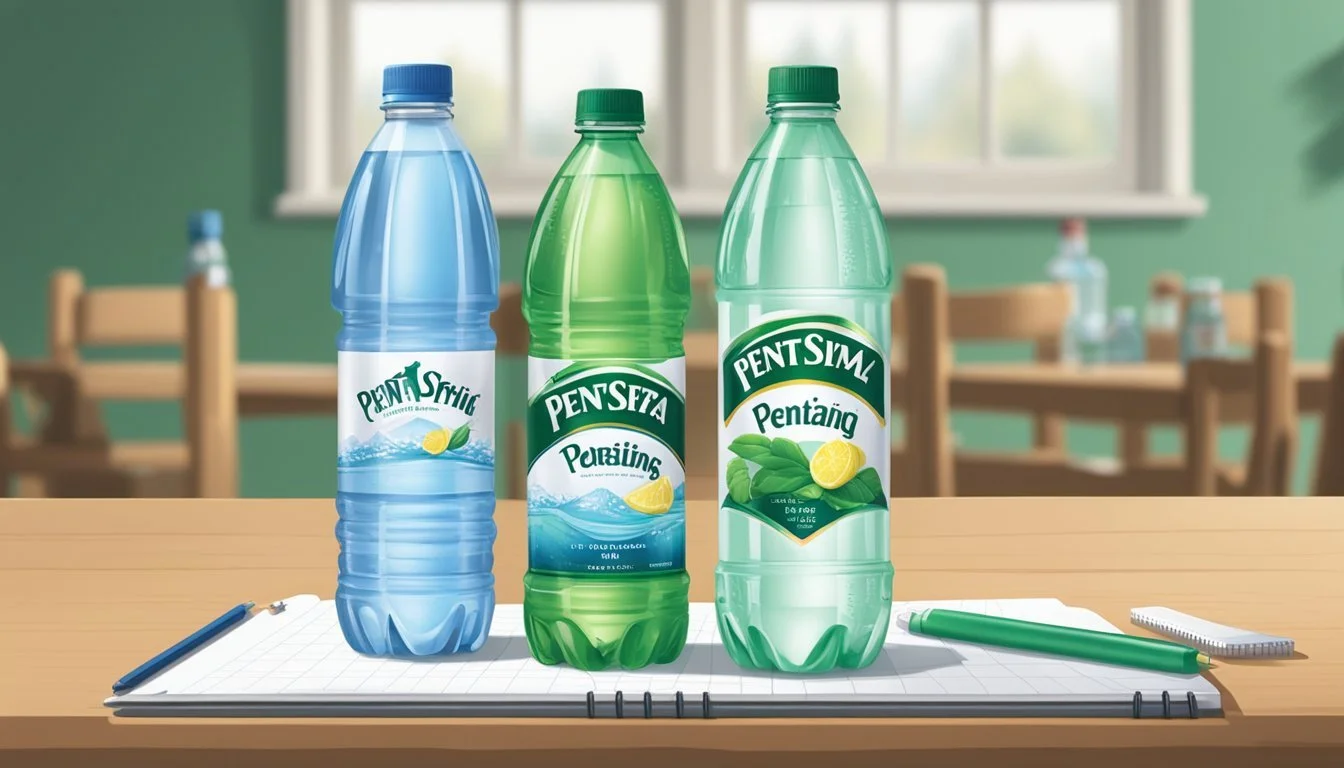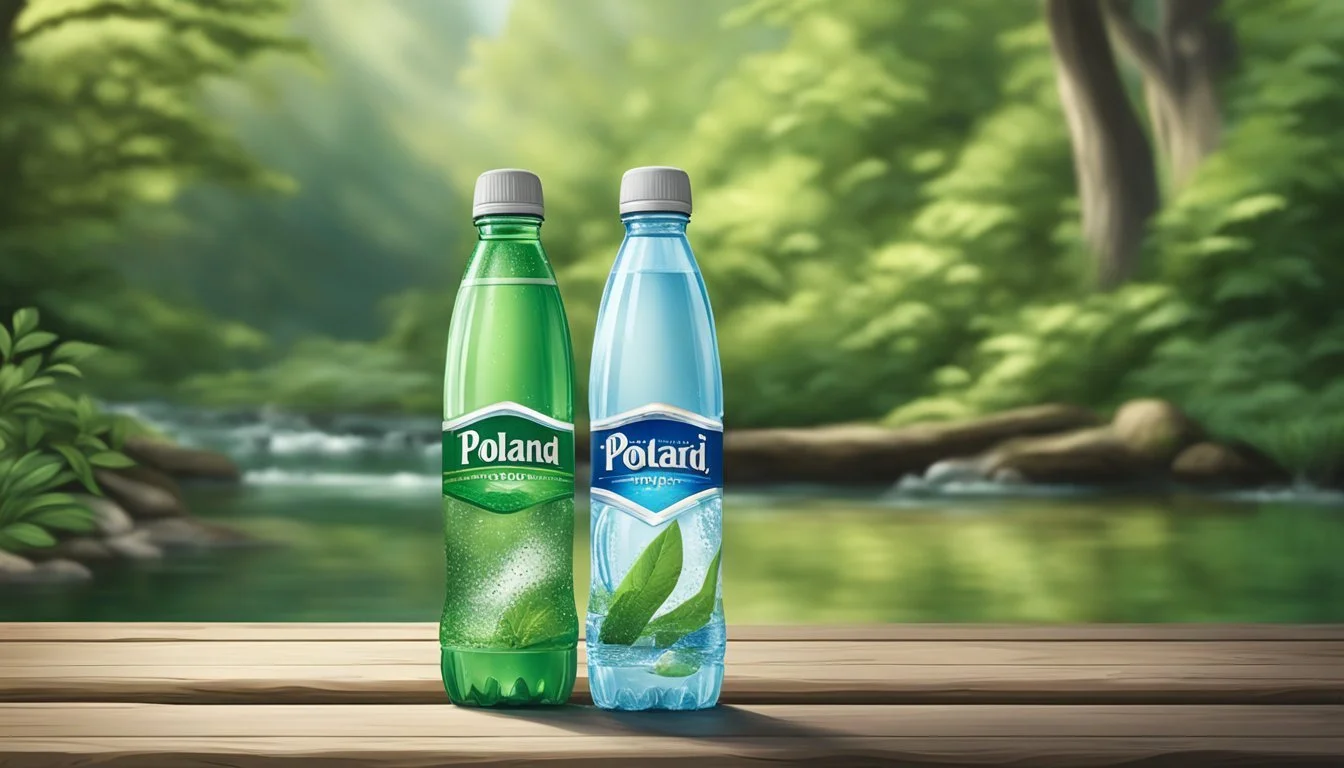Penta vs. Poland Spring
A Comparative Analysis of Bottled Water Quality
When deciding between brands of bottled water, consumers often consider purity, taste, and the source of the water. Penta and Poland Spring are two distinct brands that have garnered attention in the bottled water market. Penta prides itself on its high level of purity and a patented ultra-filtering process, which is claimed to produce water that is free of contaminants, additives, and impurities. In contrast, Poland Spring, sourced from multiple springs in Maine, has a long-standing reputation and markets itself with a focus on natural origin.
While Penta water's selling point is its scientifically advanced purification process, which includes steps like UV light treatment and deionization, Poland Spring emphasizes its natural mineral content and taste. The brand has faced scrutiny regarding the authenticity of its spring sources, yet it remains a popular choice among consumers seeking what is perceived as a natural and refreshing option.
The value of both brands is influenced by factors such as accessibility, marketing strategies, and public perception. Consumers may weigh these elements differently based on their individual priorities, whether they lean towards the technological precision of Penta or the established brand history and natural appeal of Poland Spring. As the bottled water industry continues to expand, these brands are vying for consumer trust and preference in an increasingly crowded marketplace.
History and Origin
Delving into the backgrounds of Penta and Poland Spring reveals the distinct journeys of these brands from their founding to their current place in the market.
Penta: From Concept to Market
Penta water made its market debut with a unique selling proposition: ultra-purified water. The brand's proprietary process includes removing impurities through a rigorous 13-step purification process. This extensive method was developed to ensure the purity and quality of water, setting it apart from most competitors. Penta's concept capitalized on consumers' growing interest in health and wellness, with an emphasis on hydration free from contaminants.
Poland Spring: Maine's Natural Resource
Poland Spring originates from the state of Maine, with a history dating back to the 19th century. The brand's name is derived from the original natural spring in the town of Poland, Maine, from which it was first drawn. Commercial exploitation of the Poland Spring began in 1859 by Hiram W. Ricker, an inn owner in the region. Over the years, Poland Spring has maintained its image as a natural and pure source of spring water. It emphasizes its connection to the Maine landscape, positioning itself as a product of natural origins.
Water Quality and Purity
When comparing bottled water brands like Penta and Poland Spring, it's essential to consider factors such as purification levels, filtration technology, and adherence to regulatory standards to assess water quality and purity.
Understanding Water Purity Levels
Water purity is determined by the concentration of total dissolved solids (TDS), which includes minerals, salts, metals, and other substances. Low levels of TDS often signify higher purity, although some minerals are beneficial for taste and health. Penta water undergoes a meticulous purification process, including reverse osmosis, to remove impurities like lead, chlorine, and heavy metals. This process minimizes the TDS level, making Penta water distinctively pure.
Role of Filtration Processes
The filtration process is critical in maintaining water quality. It eliminates various contaminants and improves the taste. Penta boasts a rigorous filtration mechanism that includes several stages such as reverse osmosis and ultraviolet light treatment, effectively filtering out contaminants. Poland Spring, sourced from multiple springs in Maine, ensures its water quality through natural filtration as it passes through layers of rock and sediment, and augments it with additional filtration and UV light for enhanced purity.
Regulations and Standards Compliance
Both Penta and Poland Spring are subject to strict regulations. The Environmental Protection Agency (EPA) regulates tap water, while the Food and Drug Administration (FDA) regulates bottled water, enforcing standards for safety, quality, and labeling. Penta and Poland Spring comply with FDA regulations, ensuring that their products are free from contaminants beyond the regulated limits. They regularly test for chemicals and microorganisms to ensure safety and report their findings in accordance with federal and state guidelines.
By adhering to these robust processes and regulations, both brands strive to deliver high-quality, pure water. However, the difference often lies in the extent of purification and filtration processes employed by each brand.
Health and Hydration
Choosing the right bottled water is essential for maintaining optimal health and hydration. It's important to consider not just water intake but also the mineral content of the options available.
Benefits of Proper Hydration
Staying adequately hydrated is crucial for numerous bodily functions. It helps regulate body temperature, maintain healthy skin, and support kidney function. Proper hydration is necessary for both cognitive and physical performance and is particularly important for cardiovascular health. Bottled waters like Penta and Poland Spring are convenient options for individuals to meet their daily hydration needs, especially when access to clean tap water is limited or when they are on the move.
Mineral Content and Health Impact
The mineral content of bottled water can contribute to the overall nutritional intake and wellness. Essential minerals found in some bottled water brands:
Mineral Health Benefit Calcium Bone health, muscle function Magnesium Heart rhythm, nerve function Potassium Blood pressure regulation Electrolytes Hydration and balance
Penta water is known for its high level of purification, including removal of most minerals and impurities. On the other hand, Poland Spring, a natural spring water, typically retains naturally occurring minerals such as calcium, magnesium, and potassium, which may contribute to the body's daily mineral needs. These minerals are involved in critical bodily processes, including but not limited to muscle contraction, nerve signaling, and maintaining a balanced pH level.
While Penta's purification process ensures a clean drinking experience, it does not contribute to mineral intake; individuals may have to rely on other dietary sources for essential minerals. Conversely, Poland Spring offers a natural mineral profile, which may be beneficial for those looking to enhance their mineral consumption through drinking water. However, it is important to keep in mind that bottled water should not be the primary source of essential minerals, which should rather come from a balanced diet.
Taste Profile
When discussing bottled water, the taste is often influenced by its source and the presence of minerals. The following subsections will explore how the taste of water, like that of Penta and Poland Spring, is defined and the factors that can affect it.
Defining the Taste of Water
The taste of water might seem a straightforward concept, but it can vary significantly. Penta Water, a type of purified water, is known for its lack of distinct flavor. This is due to the heavy filtration process it undergoes, which strips away most minerals and impurities. On the other hand, Poland Spring, which is a natural spring water, often has a slight mineral taste owing to the minerals that it retains from its source. This contributes to a crisp profile that some consumers can detect.
Factors Affecting Water Taste
Several key factors influence the taste of bottled water:
Source: The source of the water can contribute to different flavor notes. Poland Spring originates from mountain springs, which implies a fresher and possibly more crisp taste, while Penta is thoroughly purified, aiming for a clean and neutral flavor profile.
Mineral Content: Minerals such as calcium, magnesium, and sodium can affect taste. Water like Poland Spring, often labeled as mineral water, has these naturally occurring minerals, providing its characteristic taste.
pH Level: The pH level, denoting acidity or alkalinity, is another aspect. Water labeled as alkaline water typically has a higher pH, which can affect the taste by adding a bit of sweetness or smoothness.
Listed below are the distinct properties of each water:
Aspect Penta Water Poland Spring Source Purified tap water Mountain springs Mineral Taste Lacks mineral flavor, tastes neutral Slight mineral flavor, can be crisp pH Level Neutral (7) Slightly alkaline
By considering these factors, consumers can better understand the taste profiles of different bottled waters and choose according to their preferences.
Environmental Impact
When comparing Penta and Poland Spring bottled water, the environmental impact encompasses not only the sustainability of production but also the eco-friendliness of packaging and recycling efforts.
Sustainability of Bottled Water Production
Sustainable bottled water production is crucial with growing environmental concerns. Penta Water claims it utilizes high-grade filtration systems to minimize ecological footprint. In contrast, Poland Spring, sourced from multiple springs in Maine, has faced scrutiny over the sustainability of its sourcing practices. The Environmental Protection Agency (EPA) plays a role by setting regulations to protect water sources, and adherence to these guidelines is essential for both brands to maintain eco-friendly operations.
Packaging and Recycling Practices
Packaging choices significantly affect a product's environmental friendliness. Penta's bottles are 100% recyclable and BPA-free, highlighting a commitment to both consumer health and reduced environmental impact. Further, Poland Spring has committed to using 100% recycled plastic in their bottles by 2022, aiming to mitigate plastic waste. Both companies stress their recycling efforts, yet the true environmental impact hinges on consumers' and municipalities' participation in recycling programs. The option for using a glass bottle remains a consideration for some brands to further enhance recyclability and reduce plastic use.
Brand Analysis
The comparison between Penta and Poland Spring necessitates a closer look at their market stance, pricing structure, and brand reputations.
Market Presence and Consumer Demand
Penta water, though not as ubiquitous as Poland Spring, prides itself on ultra-purified water that undergoes a rigorous 13-step purification process. It targets a niche audience that values purity and is willing to pay a premium. On the other hand, Poland Spring, a brand under the Nestlé banner, boasts a strong market presence and consumer demand, leveraging its longstanding history and widespread distribution. Poland Spring has faced challenges, including a class action lawsuit disputing its claim of being "100% Natural Spring Water".
Price Comparison and Affordability
In terms of affordability, Penta water generally comes at a higher price point due to its specialized purification technique and branding as a premium product. Poland Spring is positioned as more affordable and is widely available, thus catering to a larger consumer base seeking cost-effective hydration options. Comparatively, Poland Spring's parent company, Nestlé, has greater economies of scale that might contribute to its competitive pricing.
Brand Reputation and Challenges
Both brands contend with the challenge of maintaining a positive public image amidst increasing scrutiny over the environmental impact of bottled water. Penta markets itself on purity and has not been significantly embroiled in controversy. Meanwhile, Poland Spring has dealt with not only lawsuits but also the broader reputation issues that face Nestlé, including concerns over PFAS contamination and ethical sourcing. Additionally, the presence of bottled water brands like Poland Spring in retailers such as Whole Foods comes with an expectation of quality and sustainability that both companies must strive to meet.
Product Offerings
Penta and Poland Spring offer distinct selections in their bottled water line-ups, addressing different consumer preferences and needs with their respective ranges.
Variety of Water Types Offered
Penta Water is known for its ultra-purified drinking water. They focus on a singular product that undergoes a patented 13-step purification process to remove more impurities than typical distillation.
On the other hand, Poland Spring offers a broader variety. Their products include:
Natural Spring Water: Originating from multiple springs in Maine.
Sparkling Water: Infused with natural carbonation.
Distilled Water: For use in appliances where mineral-free water is recommended.
Other brands in the market present their own assortments as well. For example:
Aquafina and Dasani: Offer primarily purified drinking water.
Evian: Known for natural spring water hailing from the French Alps.
Perrier: A staple for carbonated mineral water.
Deer Park: Provides naturally sourced spring water from various springs across the U.S.
Specialty Products and Innovations
Penta does not market a variety of water types but emphasizes the science behind their purification process. Their water boasts high levels of purity and quality, without additives such as sodium, artificial sweeteners, or preservatives.
Poland Spring's innovations lie in their product variations, including:
Poland Spring ORIGIN: Touted as 100% natural spring water sourced from a pristine spring in Maine, and packaged in a recycled plastic bottle.
Energy Water: Combining spring water with added caffeine from natural sources.
Similarly, other brands have developed specialty products:
Icelandic Glacial Water and Iceland Spring: Offer water with naturally occurring minerals, sourced from Iceland's glaciers and springs.
Arrowhead Mountain Spring Water: Sources its water from mountain springs in the western U.S. and Canada.
Acqua Panna: Offers still natural mineral water from the hills of Tuscany in Italy.
Ice Mountain Natural Spring Water: Supplies spring water drawn from the Midwest's natural underground reservoirs.
Diverse product offerings cater to a wide range of tastes and dietary preferences, from those seeking simple hydration to discerning customers looking for unique mineral content or eco-friendly packaging. Each brand attempts to carve out its niche through an array of products and specialized features.
Technological Advancements
In the bottled water industry, cutting-edge technology is crucial for producing high-quality products. Both Penta and Poland Spring utilize advanced methods to enhance the purity and taste of their water, though their approaches differ significantly.
The Hydro-7 Filtration Process of Penta
Penta Water employs a unique proprietary technology called the Hydro-7 Filtration Process. This intricate system is designed to remove impurities up to the smallest possible size—100 times smaller than industry standard filters. By using a combination of the following steps, they ensure an ultra-pure product:
Mechanical Filtration
Activated Carbon Filtration
Two Steps of Reverse Osmosis
UV Light Treatment
Ozonation
Deionization
Each step is meticulously calibrated to target and eliminate a wide array of contaminants, resulting in water that is not only ultra-pure but also maintains a consistent taste profile.
Emerging Water Purification Technologies
In contrast, Poland Spring has been focusing on investing in and utilizing emerging water treatment technologies. While specific technological details are proprietary and not publicly disclosed, it's known that they are exploring innovative methods that go beyond traditional filtration. These advancements aim to set new standards in the bottled water industry by enhancing both the purification process and sustainability. Technologies under consideration include advanced filtration process mechanisms, eco-friendly bottling solutions, and systems that improve the efficiency of water treatment facilities.
By adopting newer and more advanced technologies, Poland Spring demonstrates a commitment to not just the quality of their product but also to the environment and resource sustainability.
Nutritional Comparison
In assessing bottled waters like Penta and Poland Spring, one should evaluate the electrolyte enhancement benefits and the nature of added minerals versus naturally occurring minerals.
Electrolyte Enhancement and Benefits
Electrolytes such as sodium, potassium, and magnesium are crucial for hydration and bodily function. Penta, which emphasizes ultra-purified water, does not typically contain added electrolytes. It relies on the purity of the water itself. On the other hand, Poland Spring, sourced from springs in Maine, naturally contains electrolytes and minerals due to its journey through underground rocks which serves to enhances its mineral content.
Penta Water:
Electrolytes: None added
Mineral Content: Minimal
Poland Spring Water:
Electrolytes: Naturally occurring
Mineral Content: Varies by source, includes natural calcium, magnesium, sodium, and bicarbonate
Natural vs. Added Minerals
Minerals in water can either be added during the bottling process or can be naturally occurring. Penta water prides itself on its lack of additives and its process designed to eliminate impurities and contaminants. It does not add minerals to its water. Poland Spring water boasts a natural mineral content, which is reflective of the minerals that the water picks up as it flows through underground aquifers.
Penta Water:
Added Minerals: None
Antioxidant Benefits: No minerals added for antioxidant properties
Poland Spring Water:
Added Minerals: None; minerals are naturally occurring
Antioxidant Benefits: Trace minerals may contribute to antioxidant properties
pH Level Analysis
In comparing Penta and Poland Spring bottled waters, their pH levels—a measure of how acidic or alkaline the water is—play a significant role in quality perception and taste preference. Consumers often have specific expectations towards the pH balance in their drinking water, which can sway their purchase decisions.
Acidity vs. Alkalinity of Water
The pH scale ranges from 0 to 14, where 7 is neutral, below 7 is acidic, and above 7 is alkaline. Penta water typically boasts a pH level that is much closer to neutral at around 7, which suggests minimal alteration and a pure composition. In contrast, Poland Spring water reports a slightly acidic to neutral pH, which could range from 6.5 to 7.5. The natural source of water and the inherent minerals it contains can affect its pH level. Alkaline water has a pH above 7 and is thought by some to offer health benefits, though scientific support for these claims is not conclusive.
pH Balance and Consumer Preference
Consumer preference can vary; some individuals seek out alkaline water like Penta for its supposed health benefits, while others may prefer the taste of water with a more neutral pH like Poland Spring. The pH levels of most bottled waters, including Penta and Poland Spring, are within the acceptable range deemed safe for drinking, which is typically between 6.5 and 8.5. However, the ideal pH level for one's palate can be subjective and influence their brand loyalty. It's important to note that while the pH level contributes to water's taste and potential health claims, it is just one of many factors consumers may consider.
Alternative Water Sources
When evaluating bottled water like Penta and Poland Spring, it’s important to consider the alternatives, such as tap water and directly sourced natural spring water. These sources can vary significantly in terms of mineral content, processing, and taste.
Comparing Bottled Water to Tap Water
Tap water is municipally supplied and often originates from rivers, lakes, or reservoirs. Before reaching the consumer, it undergoes treatment to meet safety standards set by regulatory agencies such as the EPA. The treatment typically includes:
Filtration
Disinfection
Addition of minerals for health purposes or to improve flavor
Tap water may also come from aquifers, which are permeable rocks that can contain or transmit groundwater. The quality can vary depending on the local treatment processes and the condition of the municipal pipes.
Exploring Natural Springs and Aquifers
Natural springs are sources where water flows naturally from the aquifer to the Earth's surface. Bottled spring waters, like Poland Spring, claim to source their water from these natural springs, but the exact sources and the blending of waters from different springs can vary.
Aquifers serve as a natural filtration system for spring water. For example, granite-based aquifers can contribute to the mineral composition and taste of the water due to the minerals present in the granite.
Granite-based aquifers: Often provide water that is low in sediment and rich in minerals.
By understanding these alternative water sources, consumers can make more informed decisions about what type of water they choose to drink, considering both quality and taste.
Consumer Insights
In assessing Penta and Poland Spring, consumer preferences and reviews play a pivotal role in determining which bottled water is considered better in the public eye.
Customer Preferences and Trends
Customers generally distinguish between purified water and bottled spring water based on taste, quality, and source. Penta, known for its ultra-purified water, appeals to those seeking water that has been filtered to remove impurities and contaminants. In contrast, Poland Spring, which offers natural spring water, often attracts those who prefer the taste and mineral content that comes from a natural source.
Purified Water: Consumers may opt for Penta because they prioritize the purification process, which includes distillation and reverse osmosis.
Bottled Spring Water: Others lean towards Poland Spring due to its natural source and essential minerals that are often retained in the water.
Impact of Reviews and Ratings
Reviews and ratings heavily influence consumer choices. Positive feedback and high ratings can validate a brand's quality and taste, while negative reviews can deter potential buyers.
Penta: Known for its high degree of purification, it often receives reviews that highlight its clean taste.
Poland Spring: Frequently praised for its accessibility and natural taste, yet occasionally criticized for subtle taste variances that may stem from different spring sources.
Consumer insight gathered from online platforms, including social media comments and e-commerce sites, shows a split preference with advocates on both sides. Some consumers express loyalty to Penta for its purity, while others value Poland Spring for its natural origins and taste profile.
In the backdrop, alternatives to bottled water such as tap water filters and at-home filtration systems have also affected consumer trends, with a growing segment pivoting towards sustainability and cost-effectiveness.
Safety Concerns
When choosing between Penta and Poland Spring bottled water, consumers often express concerns about potential safety issues. The primary areas of concern revolve around chemical contaminants, such as PFAS and lead, and the presence of microplastics in the water.
Chemical Contaminants and Regulations
PFAS (Per- and Polyfluoroalkyl Substances): These chemicals are often referred to as "forever chemicals" and can be found in various consumer products. They are resistant to water, oil, and heat, and do not break down easily in the environment. PFAS have been linked to health issues such as cancer and immune system dysfunction. Both Penta and Poland Spring, like all bottled water brands, are subject to regulations by the Food and Drug Administration (FDA) and the Environmental Protection Agency (EPA) that set limits on the levels of these contaminants.
Lead: Lead contamination in drinking water can occur from the corrosion of older pipes. Ingesting lead can lead to serious health problems, especially for children and pregnant women. Regulations require bottled water producers to monitor and limit the concentration of lead in their products.
Chlorine, Aluminum, and Fluoride: These substances are often found in tap water as part of the treatment process. Chlorine is used to disinfect water, fluoride is added for dental health benefits, and aluminum may be used in water treatment processes. Bottled water typically has lower levels of these substances, as it undergoes different filtration processes.
Microplastics and Water Safety
Microplastics: These are tiny plastic particles that can infiltrate water sources. Recent studies have indicated the presence of microplastics in various bottled water brands. The health implications of microplastics ingestion are not entirely clear, but research is ongoing.
Water Safety Measures: Bottled water producers, including Penta and Poland Spring, use various filtration techniques, such as reverse osmosis and ozonation, to remove impurities and ensure the safety of the water. These measures are designed to reduce or eliminate the presence of contaminants, including microplastics.
Each factor must be considered to determine the overall safety of bottled water and to make an informed choice between brands like Penta and Poland Spring.
Legal and Ethical Considerations
When considering bottled water brands like Penta and Poland Spring, consumers often look beyond taste and purity to the legal and ethical records of their producers. This examination encompasses both the sustainability of sourcing methods and the outcomes of any legal confrontations.
Water Rights and Corporate Responsibility
Nestlé, the parent company of Poland Spring, has faced scrutiny over its practices of water extraction. One core issue revolves around the debate on whether large corporations should have rights to withdraw water from public resources at scale, and how these practices affect local communities and ecosystems. Coca-Cola, although not directly connected to Penta or Poland Spring, has also faced criticism for similar practices in the past, which brings to light industry-wide ethical questions on corporate responsibilities in water sourcing.
Legal Disputes Involving Water Brands
Poland Spring has been at the center of several class action lawsuits. Some suits, like the one alleging false advertising in their bottled water claims, challenge the very definition of "spring water" as set by the FDA and question the brand's adherence to it. Another more recent class action suggests each bottle of Poland Spring water contains phthalates, chemicals adding flexibility to plastics, which further questions the purity of the product consumers receive.
In contrast, Penta, which has not seen the same scale of legal disputes, prides itself on its proprietary purification process that claims to remove more impurities and results in a notably pure final product. Nonetheless, as part of the bottled water industry, Penta is not immune to the broader ethical debates on the environmental impact of bottled water production.
Conclusion
When deciding between Penta and Poland Spring bottled waters, consumers should consider several factors. Penta water is known for its ultra-purified quality, undergoing a patented 13-step purification process and infused with oxygen for enhanced hydration. This brand positions itself towards individuals seeking water with a high level of purity.
On the other hand, Poland Spring offers natural spring water, sourced from Maine, USA. The brand emphasizes its natural origin and claims that its water contains naturally occurring minerals, which may contribute to taste and potential health benefits.
Penta:
Ultra-purified
13-step purification process
Oxygen-infused
Poland Spring:
Natural spring water
Sourced from Maine
Contains naturally occurring minerals
Consumers prioritizing ultimate purification might lean towards Penta. Those who prefer naturally sourced water with mineral content may find Poland Spring more suitable. Personal preference regarding taste and the value placed on the source and treatment of the water also play crucial roles when making a choice.
Each brand offers a distinctive proposition:
Penta is for purity and enhanced hydration.
Poland Spring is for a natural and mineral-rich experience.
In conclusion, the decision between Penta and Poland Spring bottled water depends on individual priorities—whether they value ultra-purification or natural mineral content. Both brands have established reputations, and preference will ultimately guide the choice.

